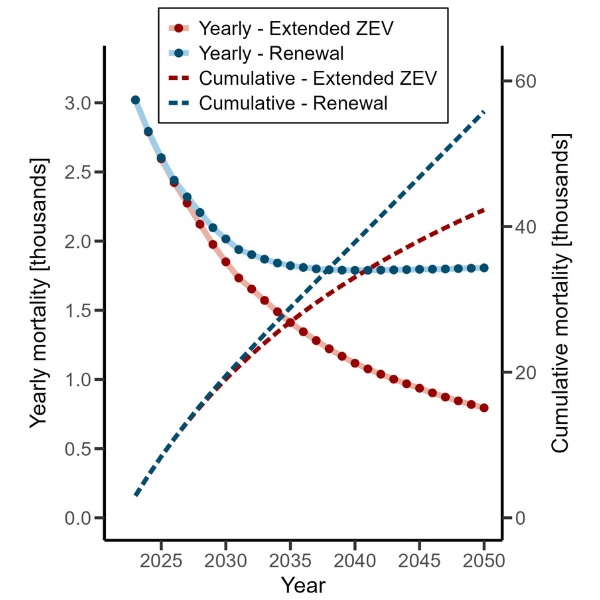Electric Vehicles and Clean Energy Could Save Thousands of Lives
Switching to electric vehicles powered by clean energy could save $84-188 billion in health care spending and lost productivity by 2050.

Read Time: 2 minutes
Published:
Every time you start a gas-powered car, the engine releases a mix of harmful pollutants into the air. Vehicle-related air pollution causes nearly 20,000 premature deaths annually in the United States. As the automotive industry transitions from traditional vehicles to electric alternatives, new research examines how this shift, combined with clean electricity adoption, could impact public health.
Jean Schmitt and colleagues investigated how switching from gas-powered to electric vehicles could affect air quality and health across the United States between now and 2050. The researchers predicted health outcomes under two scenarios: 1) continuing with standard gas vehicles that follow current fuel efficiency regulations, or 2) shifting to electric vehicles powered increasingly by clean electricity sources.
The graph below tracks air pollution-related deaths over time. If we continue using gas vehicles (shown by the blue lines), improved technology and regulations help reduce deaths to about 1,800 annually by 2050. However, transitioning to electric vehicles (shown by the red lines) could reduce deaths to 800 per year—saving an additional thousand lives annually. While both paths show initial improvements, the life-saving benefits of electric vehicles become increasingly clear after 2028.

By analyzing air pollution exposure and its known health effects, the researchers calculated that switching to electric vehicles powered by clean electricity sources could prevent $84-188 billion in health care spending and lost productivity by 2050. Cities, where more people are exposed to vehicle pollution, would see the greatest benefits, with urban residents potentially avoiding up to $752 in health-related costs per person.
These findings demonstrate that the health benefits require both widespread adoption of electric vehicles and development of clean electricity infrastructure. Together, these changes could substantially reduce air pollution-related illnesses and deaths across the United States.



